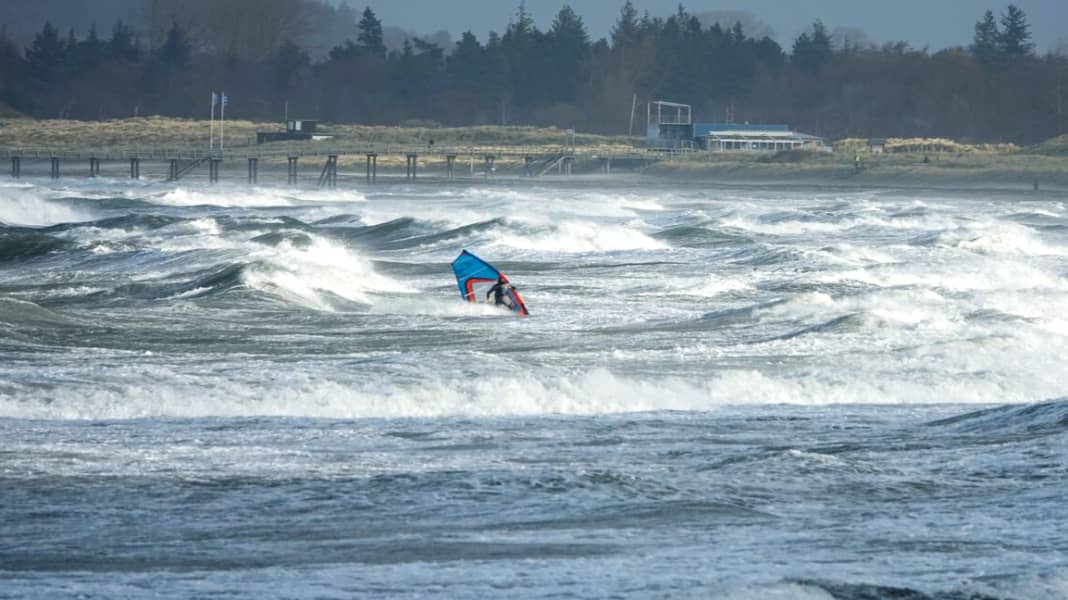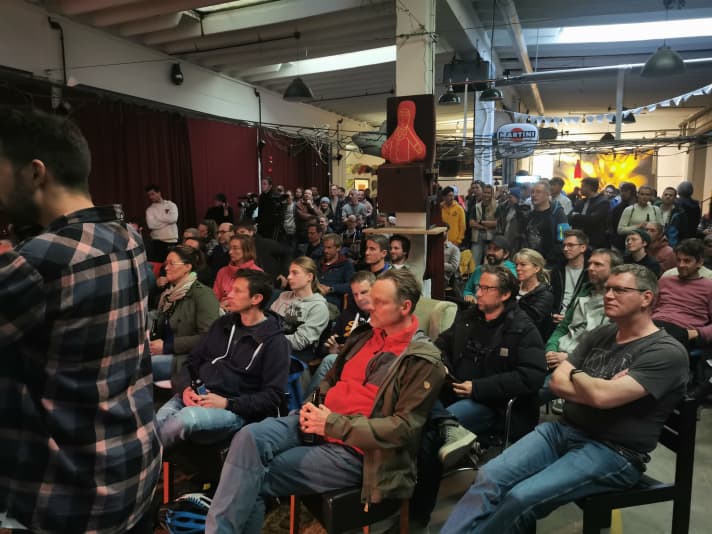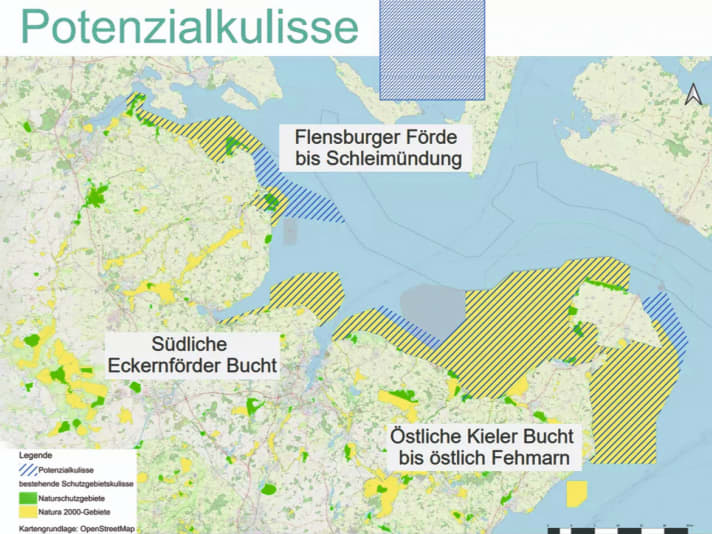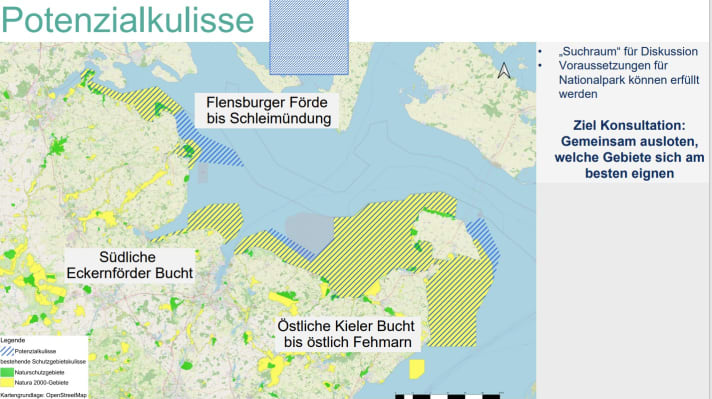
The extent to which the environment minister's planned national park project is keeping the water sports scene busy was demonstrated at the "strategy meeting" in Kiel's Werftbahnstraße, which took place on the evening of 28 April - the hall was packed! Wingsurfers, surfers, windsurfers, kiters and representatives of water sports associations and surf schools had come to Kiel to take part, with some visitors travelling from Hamburg, Schwerin or Fehmarn.

First of all, Björn Brüggemann, the founder of the the petition against spot closures, a brief introduction to the topic. Roughly summarised: If the Baltic Sea National Park goes ahead as planned, 50 per cent of the area in the designated area will have to become zero-use zones, in which all water sports would then be prohibited.
Dr Jörgen Vogt, head of the Global Kitesports Association (GKA) and the Global Wingsports Association (GWA), then reported on his experiences in the Wadden Sea National Park, where the fight against kite bans lasted eight years.

Baltic Sea National Park: to reject or support?
Questions from the audience were also discussed later on. The water sports community seems divided on the question of whether a national park should be rejected in general or whether it should be supported in the hope that access to the spots will be preserved. The problem: for many water sports enthusiasts, the national park is still a nebulous construct and it is currently impossible to predict which spots would be affected by closures. Accordingly, parts of the water sports community are still finding it difficult to reject environmental protection measures and categorically oppose the park.
The opposing side argues that a national park alone would not necessarily improve the condition of the Baltic Sea, as it would not solve the major problems - nutrient input, contaminated sites, ammunition remnants and shipping traffic. In addition - as the example of the Wadden Sea National Park has shown - there is the problem that individual spots within a national park can be closed to water sports enthusiasts by simple administrative acts, e.g. by a municipality, for example if there is a suspicion that sports enthusiasts are disturbing birds or nature. Proving that this is not the case would be almost impossible and would involve lengthy court cases and expensive expert opinions.
Finding a common position is therefore likely to be the most difficult endeavour at the moment.
Parts of the event were recorded, from minute 13:00 of the following video you can follow the arguments and discussions.
Various workshops are currently being set up in which certain tasks are to be distributed - more information on this will follow shortly.
The most important points on the status of the Baltic Sea National Park at a glance:
- There is still no decision on the establishment, but a proposal with the affected areas is available
- Stakeholders from tourism, sport, fishing and other sectors will soon be presenting their points of view in six workshops with 50 participants each
- This is followed by an interlocking workshop with five participants from each of the six workshops, where an overall picture is drawn up and presented to politicians
- Many different interests come together, no guarantee that the interests of water sports enthusiasts will be taken into account by petition alone
- In the planned information event for surfers, wingers and kiters, a strategy is to be developed together with Björn and the initiators of the petition
These are the plans for a Baltic Sea National Park

Baltic Sea National Park: What's behind it
Tobias Goldschmidt has already presented initial plans for a "Baltic Sea National Park" in 2022. It is intended to connect the various nature and bird sanctuaries on the Baltic Sea and at the same time "deepen their protection", as the Green politician says - so that the Baltic Sea "will be better again in the future". This could entail massive restrictions for water sports, as part of a national park are so-called no-use zones in which water sports, shipping and fishing would be taboo.
In a national park, at least 50 per cent of the area would have to be left to nature - similar to the Wadden Sea National Park, which is around 300,000 hectares larger than the potential on the Baltic Sea. The ministry hopes that the new national park will provide "a real boost in attractiveness" for the Baltic Sea coast and "enormous opportunities for tourism and the economy", as Goldschmidt told the Schleswig-Holstein newspaper publisher.

